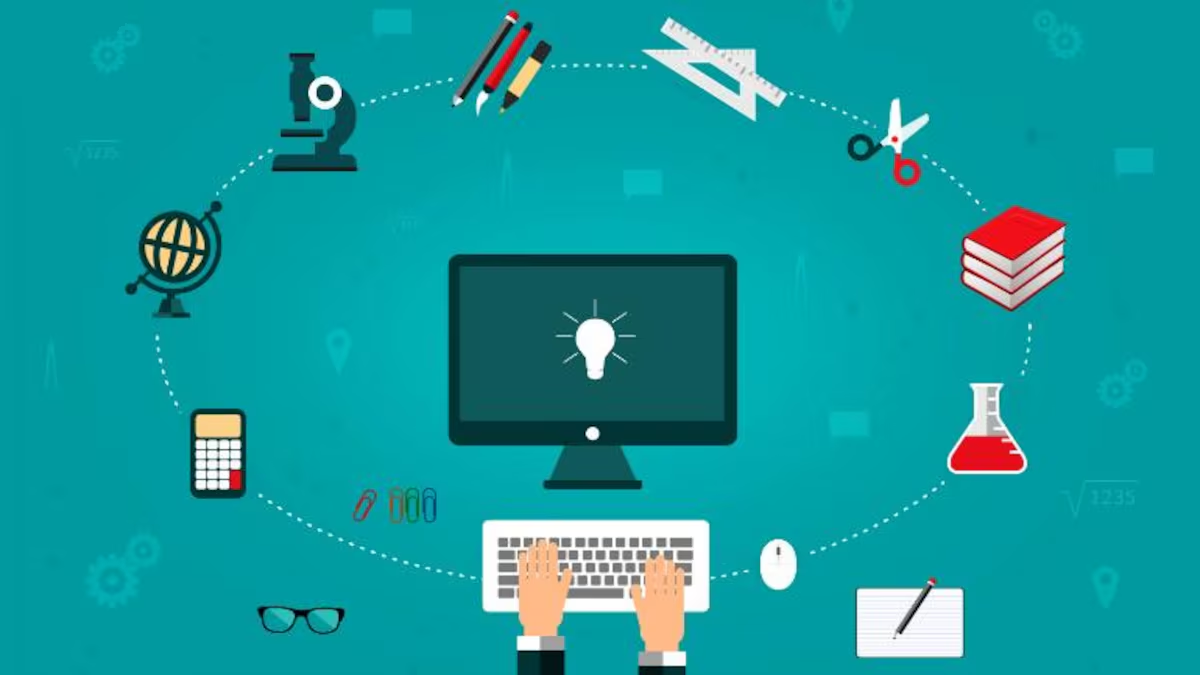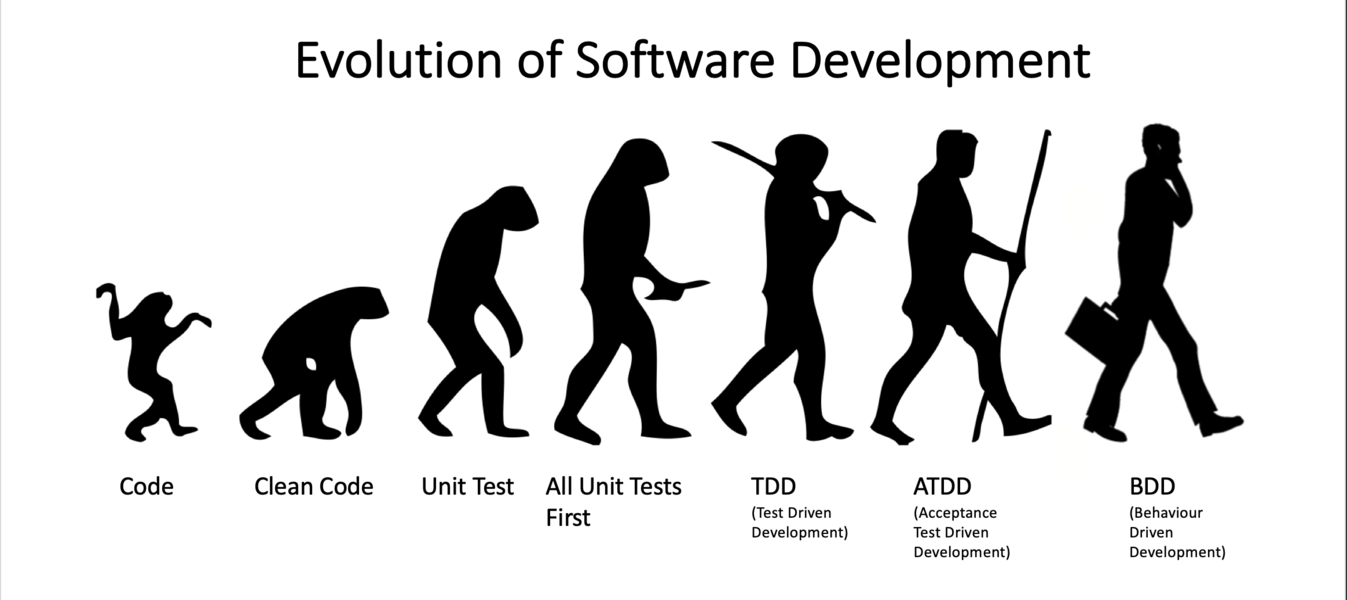
Table of Contents
Introduction
The Impact of Software Innovations on Modern Life – In today’s digital world, software is everywhere. From the apps on our smartphones to the powerful tools that run our businesses, software has become an essential part of our daily lives. But what exactly is software, and why is it so important? In this article, we will explore the latest innovations in software, their relevance to modern society, and the profound impact they have on the way we live, work, and interact with technology.
1. The Evolution of Software: A Glimpse into the Past and Present
In today’s world, software is at the heart of almost every aspect of modern life. From the apps on your phone to the systems driving industries, it’s hard to imagine a day without the software that powers our digital world. But how did we get here? What was the journey from the early days of computing to the sophisticated, AI-driven applications we use today?
This article will take you through the evolution of software, examining the key milestones, the impact of innovation on society, and how software has transformed our everyday lives.
The Birth of Software: The Early Days of Computing
The concept of software didn’t even exist in the early stages of computing. In fact, the first computers were nothing like the devices we use today. Early computing machines were huge, often filling entire rooms, and their function was limited to basic calculations.
The First Software: Machine Code and Assembly Language
In the beginning, software wasn’t written in any high-level programming language. Instead, programmers used machine code, the lowest-level language that directly communicates with the computer’s hardware. This meant that writing software was a painstaking process of flipping switches or punching holes in cards.
The advent of assembly language in the 1950s allowed for a more human-readable way of coding, but it was still far from the intuitive programming we know today. Writing software during this period required a deep understanding of the machine’s inner workings and was highly dependent on the specific hardware being used.
The Rise of High-Level Programming Languages
As computing technology advanced, so too did the need for more accessible software. The 1960s and 1970s saw the development of high-level programming languages like Fortran, COBOL, and LISP, which allowed developers to write code in a more abstract way, making it easier to develop software that was portable across different machines.
These languages revolutionized the field by providing tools to handle more complex problems. Fortran became popular for scientific computing, COBOL was used for business applications, and LISP found its home in artificial intelligence research.
The Role of Compilers and Operating Systems
During this time, the role of compilers and operating systems began to take shape. Compilers, which translate human-readable code into machine code, made it possible to write software more efficiently. Meanwhile, operating systems such as Unix provided a platform that allowed software to run on multiple types of hardware.
Operating systems introduced the concept of multitasking and memory management, which allowed software to run more effectively. This was a pivotal moment in the evolution of software because it led to a more user-friendly and functional computing environment.
The Software Explosion: 1980s to 1990s
The 1980s and 1990s marked a golden era for software development. Personal computers became more affordable, and businesses and consumers alike started adopting them. This sparked a massive demand for software to run on these machines.
The Rise of Graphical User Interfaces (GUIs)
In the early days, most software operated through command-line interfaces (CLI), where users had to type in specific commands to interact with the computer. The introduction of graphical user interfaces (GUIs) in the 1980s, particularly with Apple’s Macintosh and Microsoft’s Windows, revolutionized the way users interacted with software. Instead of typing commands, users could now click on icons and navigate through menus.
This shift made software more accessible to the masses and led to the creation of widely used applications like word processors, spreadsheets, and graphic design programs. Microsoft Office, Adobe Photoshop, and other programs became household names during this period, and the software industry boomed.
The Internet and the Rise of Web Software
By the late 1990s, the internet began to play a major role in software development. The World Wide Web opened up new possibilities for software, and the rise of web browsers like Netscape Navigator and Internet Explorer enabled users to access information online easily.
This era also saw the rise of e-commerce, with companies like Amazon and eBay revolutionizing how we shop. As the internet became more accessible, software developers began shifting their focus to creating web-based applications that could run directly in a browser, eliminating the need for users to install software on their machines.
The Modern Age of Software: 2000s to Present
As we moved into the 21st century, software continued to evolve at a rapid pace. The growth of mobile devices, the rise of cloud computing, and the increasing use of artificial intelligence (AI) have transformed how we interact with software.
Mobile Software: The Smartphone Revolution
With the launch of the iPhone in 2007 and the subsequent rise of smartphones, mobile software became an essential part of everyday life. Apps for everything from social media to productivity tools flooded the market, making it easy for users to perform tasks on the go.
App Stores like the Apple App Store and Google Play became major platforms for software distribution, and the competition for the best app intensified. Software developers now had to consider user experience (UX) and design more than ever before, as the mobile-first approach became the standard.
Cloud Computing and SaaS
Cloud computing, which allows users to store and access data over the internet, rather than on local servers, became a game-changer for businesses and consumers. Platforms like Google Drive, Dropbox, and OneDrive made it easier to store files remotely and collaborate in real time.
The shift to cloud computing also gave rise to Software-as-a-Service (SaaS), where users could access software through a subscription model rather than buying a physical copy or installing it on their machines. Popular SaaS applications like Salesforce, Slack, and Zoom became integral to business operations, allowing for seamless collaboration and communication.
Artificial Intelligence and Machine Learning
Perhaps the most transformative change in modern software is the integration of artificial intelligence (AI) and machine learning (ML). AI-powered software, such as virtual assistants like Siri, Google Assistant, and Alexa, can now perform tasks like answering questions, setting reminders, and controlling smart home devices.
Machine learning, a subset of AI, allows software to learn and adapt over time, making it capable of making predictions, automating tasks, and even driving autonomous vehicles. AI is also transforming industries like healthcare, finance, and entertainment by providing more personalized services and streamlining complex processes.
The Impact of Software on Society
Software has undoubtedly had a profound impact on society. It has revolutionized how we work, communicate, learn, and entertain ourselves. However, this rapid evolution also brings challenges and ethical considerations.
Automation and Job Displacement
As AI and automation technologies continue to improve, there are concerns about job displacement. Many tasks that were once performed by humans are now being automated by software, leading to fears that certain jobs may become obsolete. However, new industries and job opportunities are also emerging, as software drives innovation in fields like cybersecurity, data science, and software development itself.
Privacy and Security
With the increasing amount of personal data being collected by software applications, privacy and security have become major concerns. Data breaches and cyberattacks are more common than ever, and users must remain vigilant about their online privacy.
Governments around the world are implementing stricter regulations on data protection, such as the GDPR in Europe, but the ongoing battle between security and privacy remains a key issue in the world of software development.
Looking Ahead: The Future of Software
The evolution of software is far from over. As technology continues to advance, we can expect even more groundbreaking innovations that will further shape the way we live and work.
Quantum Computing
One of the most exciting frontiers in software development is quantum computing, which promises to solve problems that are currently beyond the reach of classical computers. Quantum computers use the principles of quantum mechanics to perform complex calculations at unprecedented speeds, opening up new possibilities for fields like cryptography, drug discovery, and artificial intelligence.
Extended Reality (XR)
Another area poised to transform software is extended reality (XR), which includes virtual reality (VR), augmented reality (AR), and mixed reality (MR). These technologies are already being used in gaming, education, and healthcare, and they are expected to become even more widespread in the coming years, offering immersive experiences that blend the physical and digital worlds.
AI-Driven Software Development
In the near future, we may see software development itself being driven by AI. Tools that automatically generate code, debug software, and optimize performance are already being explored. This could drastically speed up development cycles and allow developers to focus on more creative aspects of their work.
2. Current Software Innovations Shaping Our World
Innovation in software is happening at a rapid pace, transforming every industry and sector. Here are some key trends in software development that are having a significant impact:
2.1 Artificial Intelligence and Machine Learning
Artificial Intelligence (AI) and Machine Learning (ML) have revolutionized software development, enabling programs to “learn” from data and make intelligent decisions. AI-powered applications are now used in a variety of fields, from autonomous vehicles to personalized shopping experiences, and even in healthcare, where they assist in diagnostics and treatment planning.
2.2 Cloud Computing
Cloud computing has changed the way businesses and individuals store and access data. With cloud-based solutions, users no longer need physical storage devices to hold data, and software can be accessed from anywhere in the world. This innovation has led to the rise of SaaS (Software as a Service) platforms, allowing businesses to use sophisticated software tools without worrying about maintenance or updates.
2.3 Blockchain Technology
Blockchain is another breakthrough technology that is starting to shape the software landscape. Initially associated with cryptocurrencies like Bitcoin, blockchain has broader applications in areas such as supply chain management, healthcare, and voting systems, where it offers increased transparency, security, and decentralization.
2.4 Internet of Things (IoT)
IoT refers to the network of physical devices that are connected to the internet, allowing them to collect and exchange data. The integration of software with IoT is transforming industries such as agriculture, manufacturing, and home automation, enabling smarter devices and more efficient systems.
3. The Relevance of Software in Our Everyday Lives
Software plays a crucial role in almost every aspect of modern life. Let’s explore how it impacts us on a personal and societal level.
3.1 Enhancing Personal Productivity
Software tools like word processors, project management apps, and communication platforms help individuals organize their tasks and stay productive. Whether you’re a student, a freelancer, or a CEO, these tools enable you to complete tasks more efficiently and collaborate with others.
3.2 Revolutionizing Healthcare
In healthcare, software is playing a transformative role. Electronic health records (EHRs), telemedicine platforms, and AI-powered diagnostic tools are improving patient care, making it more accessible and efficient. Software innovations are helping doctors and patients communicate more effectively, and advanced algorithms are assisting in the identification of diseases, leading to earlier diagnoses and better treatment outcomes.
3.3 Redefining Communication and Social Interaction
Social media platforms, instant messaging apps, and video conferencing tools have changed the way we interact with each other. These software innovations have enabled people to stay connected no matter the distance, breaking down geographical barriers and enabling global communication.
3.4 Impact on Education
Software has transformed education, making learning more interactive and accessible. Online learning platforms, educational games, and virtual classrooms have democratized education, offering new opportunities for students around the world.
4. The Future of Software: What Lies Ahead?
As we look to the future, the software landscape is likely to continue evolving rapidly. Here are some potential trends that will shape the future:
4.1 Quantum Computing
Quantum computing is an emerging field that could revolutionize the way we approach problem-solving. Unlike classical computers, which process information in binary, quantum computers use quantum bits (qubits) that can represent multiple states simultaneously. This could unlock new possibilities in fields such as cryptography, drug discovery, and climate modeling.
4.2 Augmented and Virtual Reality
AR and VR technologies are already making waves in industries like gaming, entertainment, and education. As software continues to develop in these areas, we can expect more immersive and interactive experiences that blend the virtual and physical worlds in exciting ways.
4.3 Autonomous Systems
The development of autonomous systems, including self-driving cars, drones, and robotics, will require advanced software solutions. These innovations have the potential to revolutionize transportation, logistics, and even healthcare by performing tasks more efficiently and safely than humans.
5. Conclusion: The Ongoing Evolution of Software
Software is at the heart of modern innovation, driving change across every sector and transforming the way we live and work. As technology continues to advance, the possibilities for new software solutions are virtually limitless. By staying informed about the latest trends and innovations, we can better understand the role that software plays in shaping our future.










